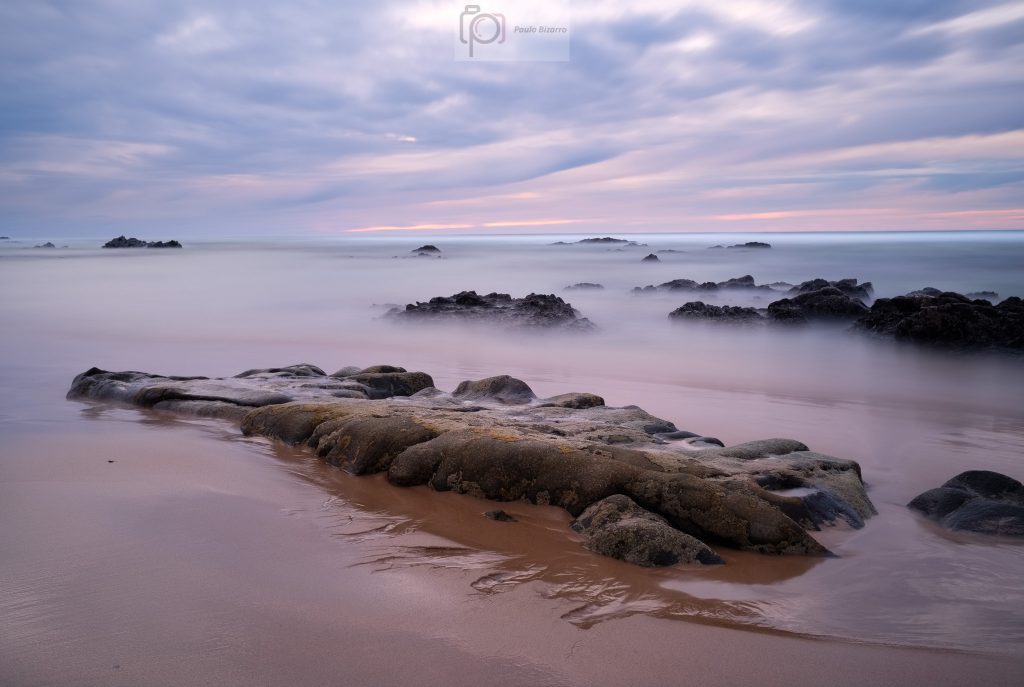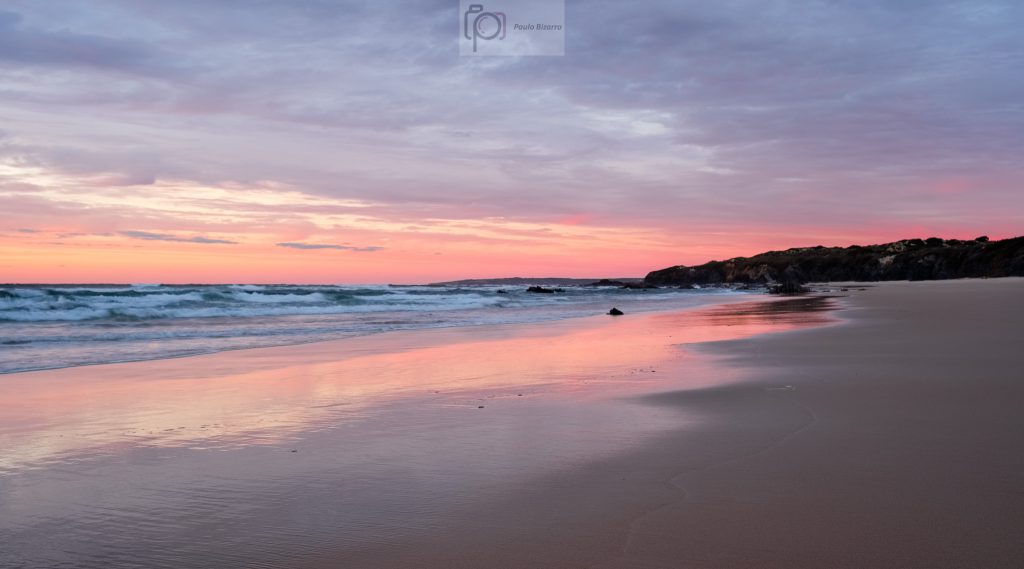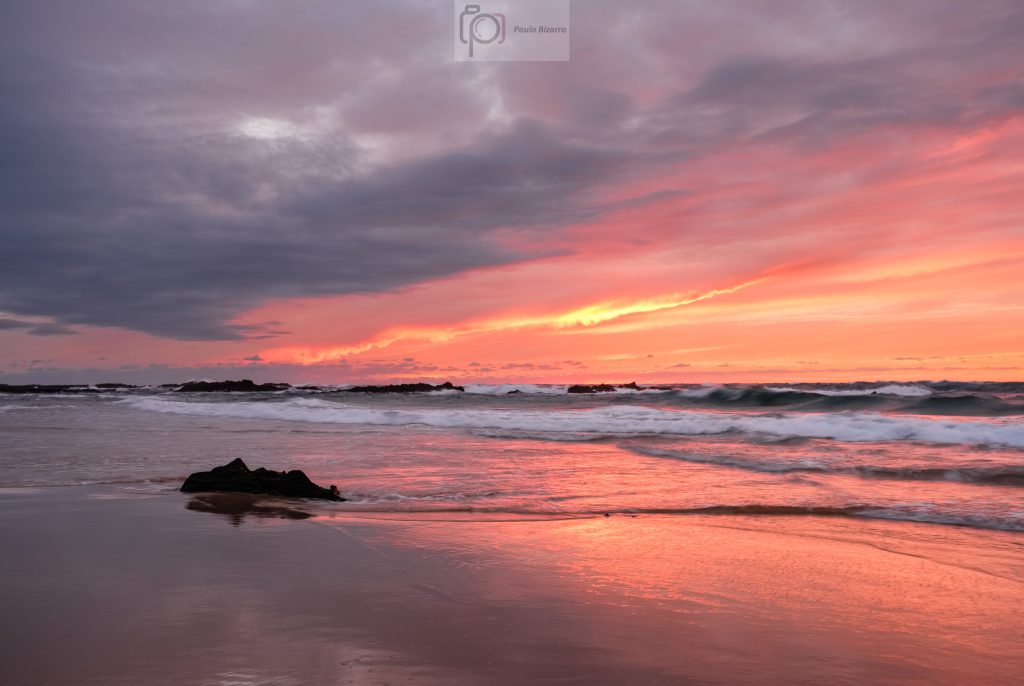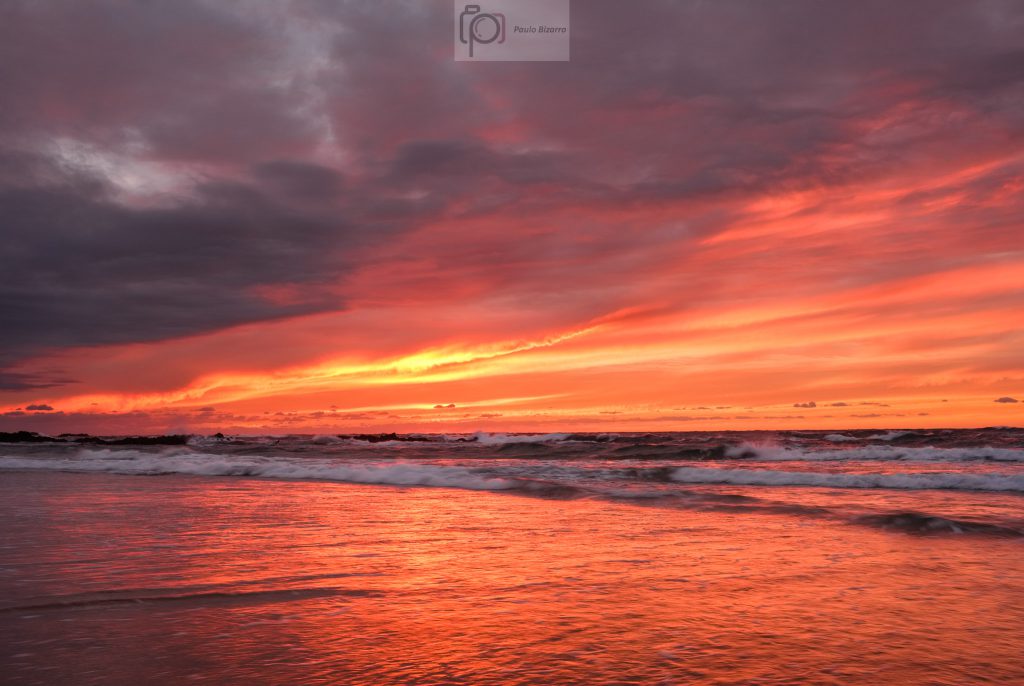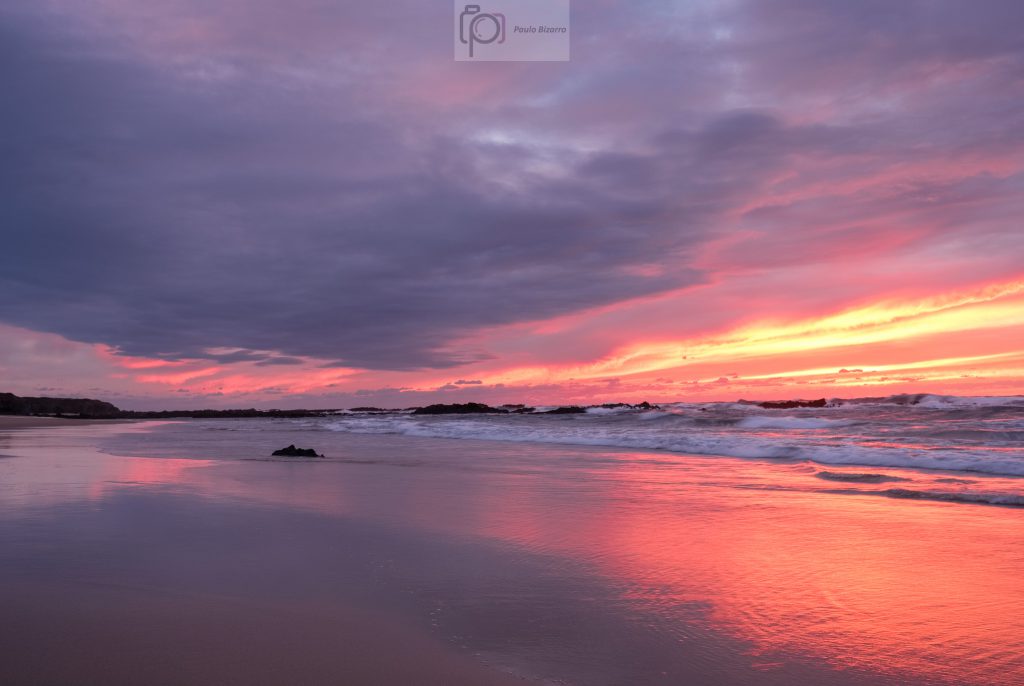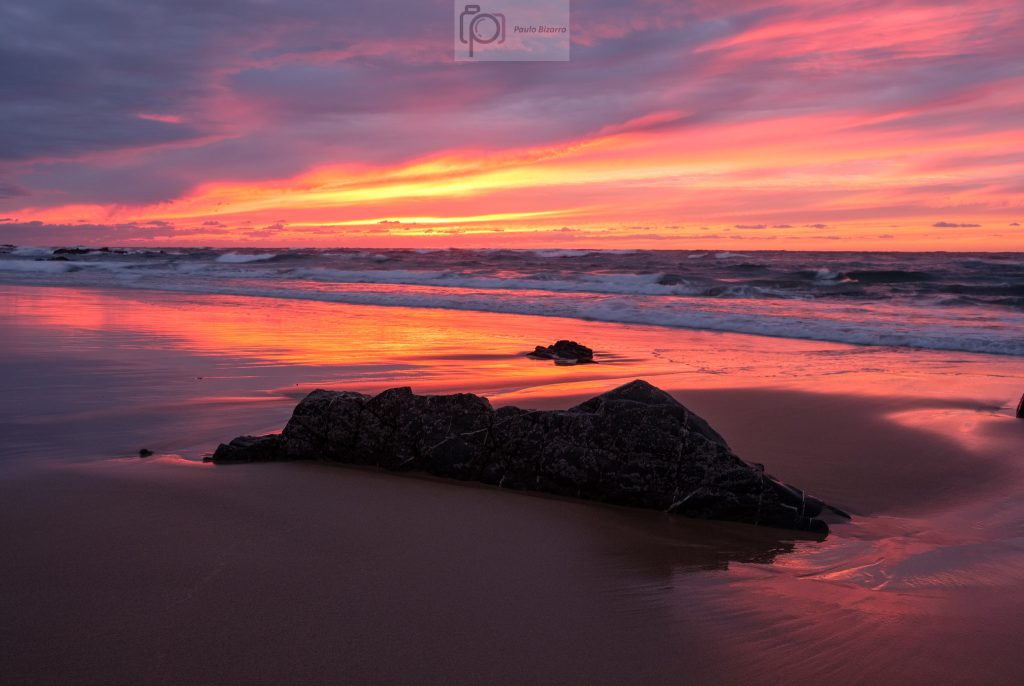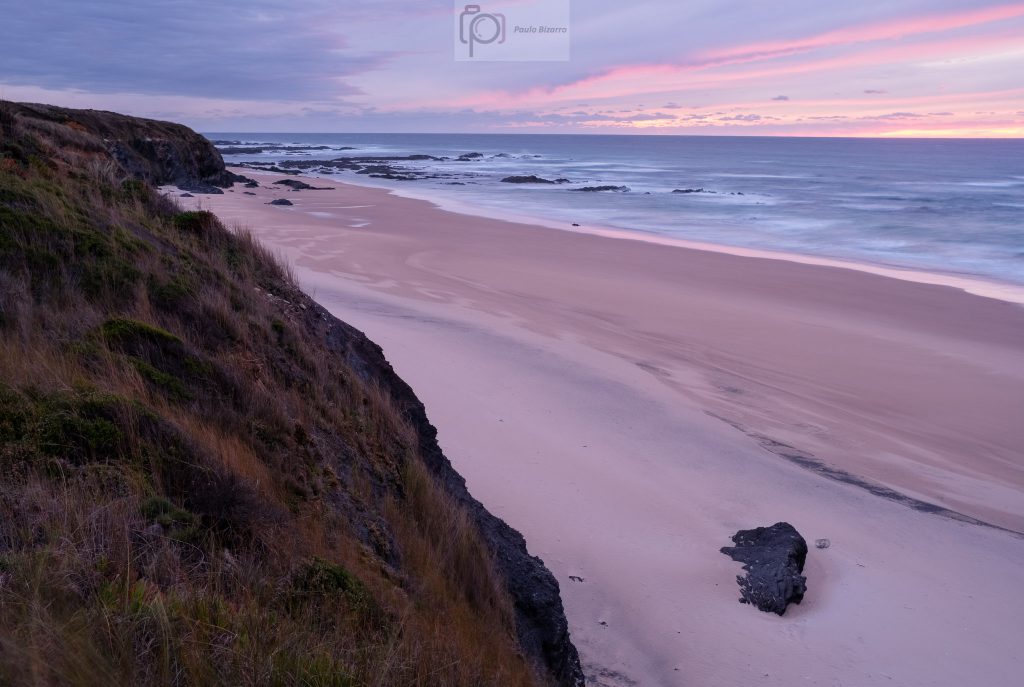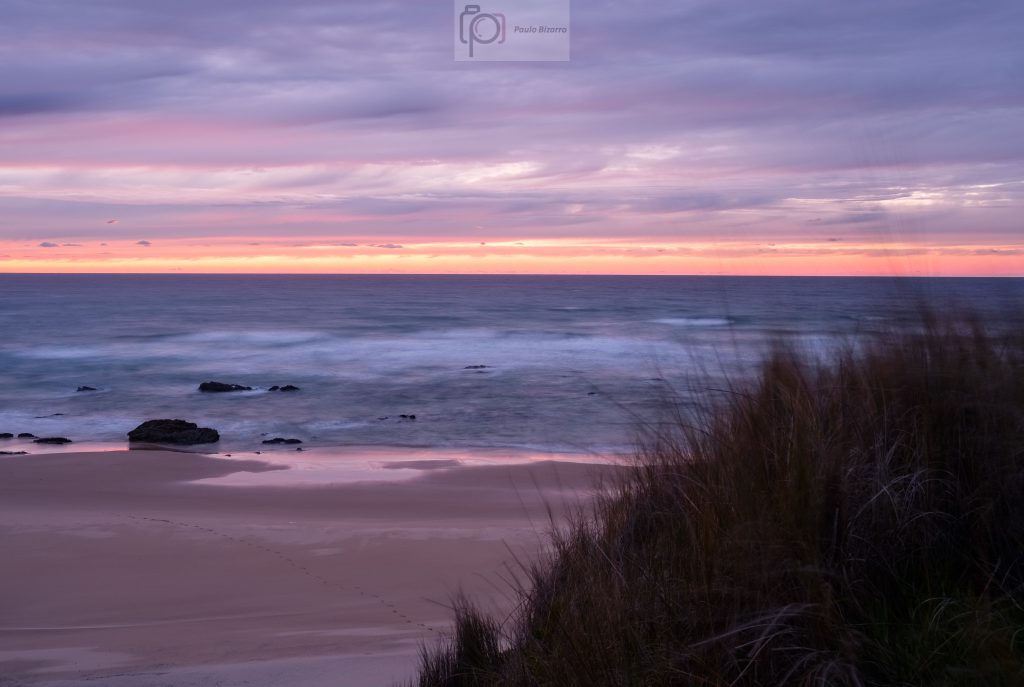As we enter the new year, it is clear that the Covid – 19 crisis is here to stay. Christmas and the New Year have come and gone, and I spent some days off of work at home, with the family. After that I decided to go to Longueira on the second weekend of January. I have a small house in that nice little village on the southwest Alentejo coast; it has been a sort of refuge on these dire times.
As always, I had my photo backpack ready, plus plans to visit nearby beaches and also walk an interior trail. It happened that on a very cold afternoon I went to one of my favourite local beaches, Brejo Largo. Looking at my records, last time I went there was at the end of 2019, more than one year ago.
So it felt appropriate to return and make some photos around sunset time. As I mentioned above, the weather was very cold for Portugal (still is today), with cloudy skies and a stiff northerly wind.
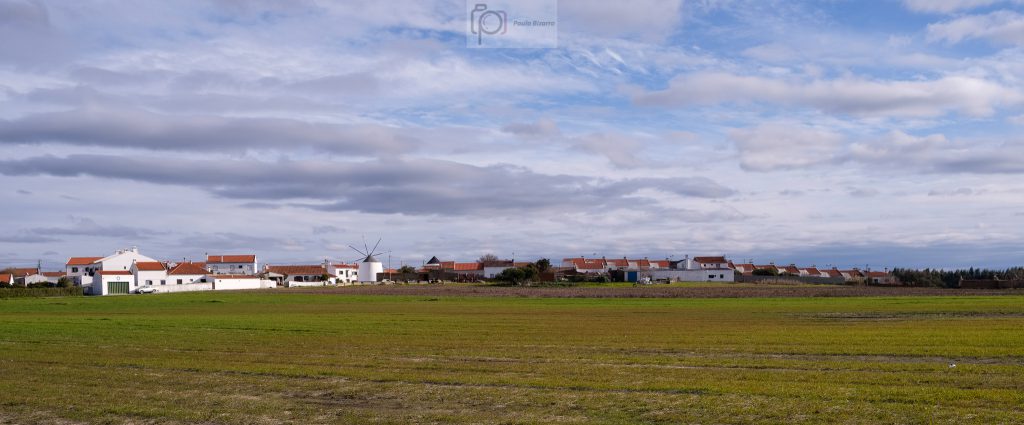
Even though it is possible to reach the beach using a four – wheel drive, I prefer to walk the 4 km between Longueira and Brejo Largo. It is a wonderful walk, crossing firstly cultivated and pasture fields, and secondly the coastal sand dunes covered with twisted pine trees and shrubs. Approaching the coast, one hears the sea before seeing it, as the the sound of the surf gets carried by the wind. After reaching the cliffs, there are two ways to go down, via rough steps excavated on the soft argillaceous rock: one set of steps on the northern end of the beach, and another one more or less in the middle. I chose to descend using the former, because it is also a nice viewpoint to start making some photos.
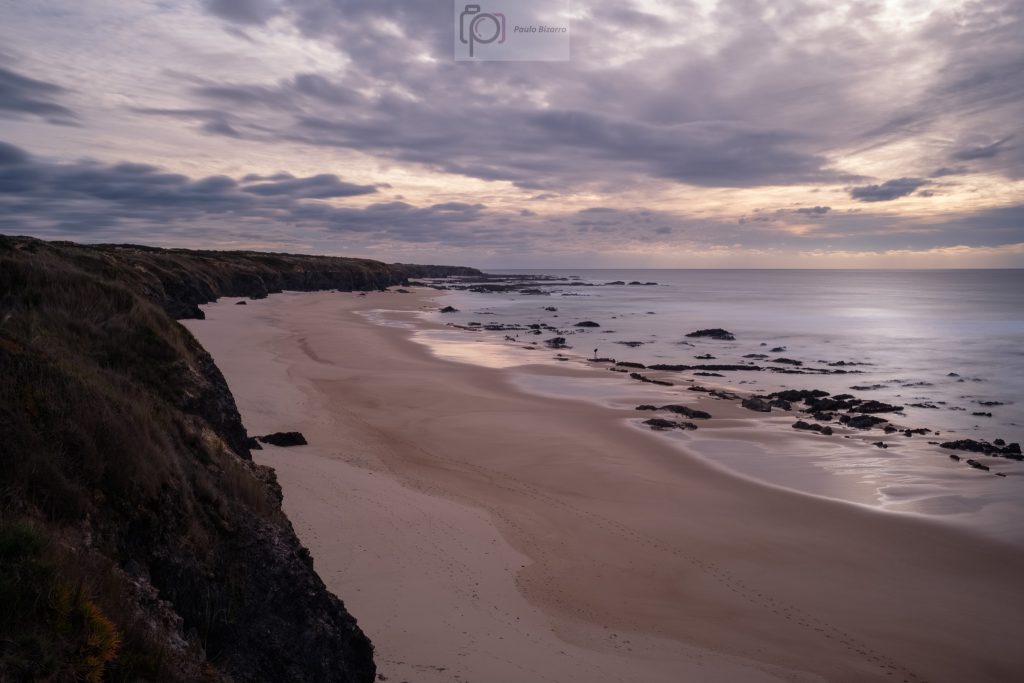
For this short photo session, I decided to keep things simple, using only one 23mm lens for my Fujifilm camera, complemented by the tripod and Lee Big Stopper filter. I am a big fan of long exposures, especially with such nice waves and clouds. As a bonus, the tide was low, so there were plenty of available rocks to use as interesting foreground subjects. The low tide exposes some interesting geologic features, such as long volcanic dykes that run parallel to the coast. Their lighter colour makes an interesting contrast with the predominant black schist.
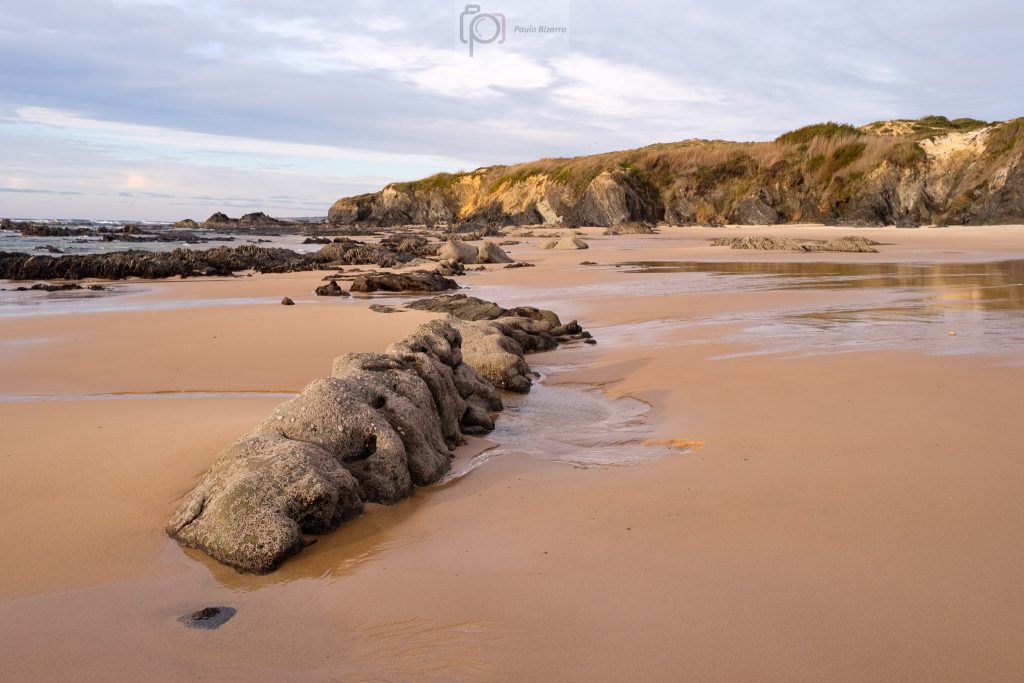
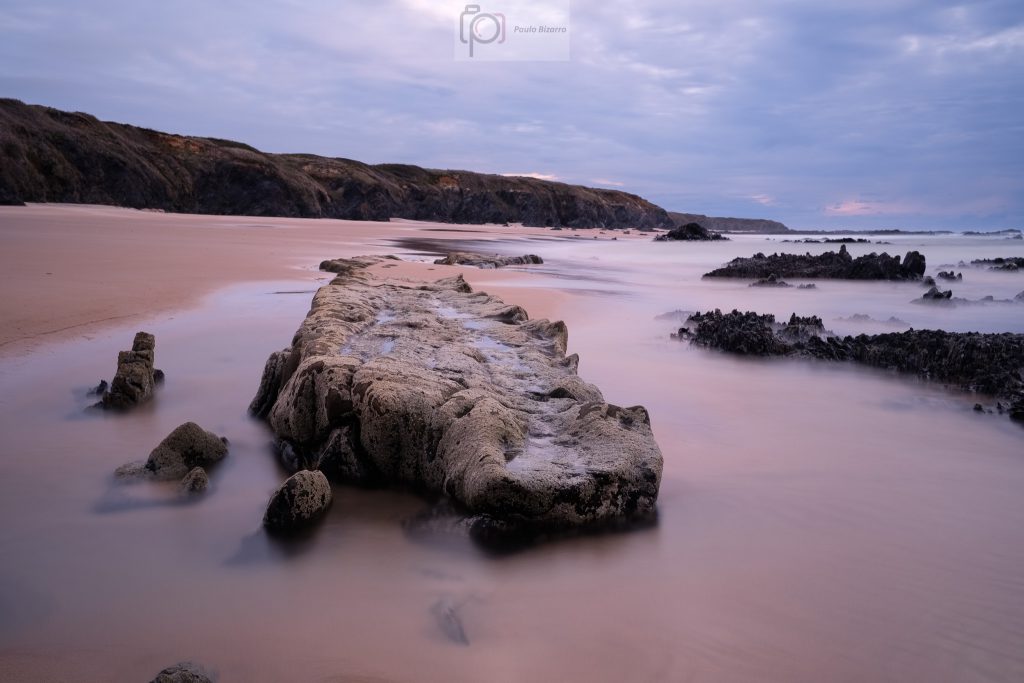
I simply walked along the beach photographing the rocks, pools, and the beautiful scenery.
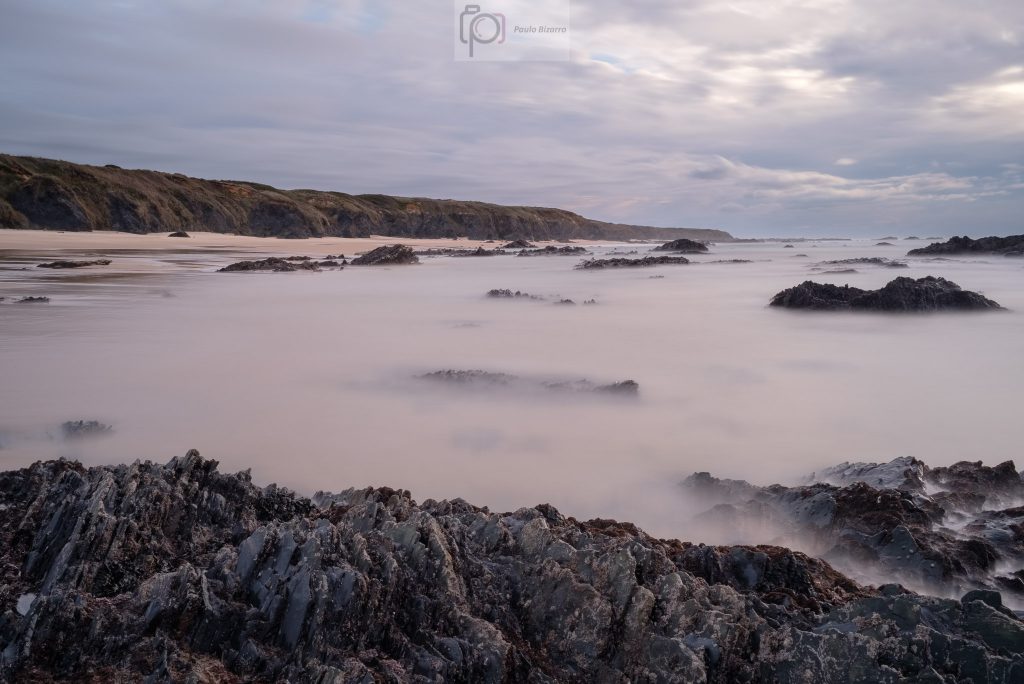
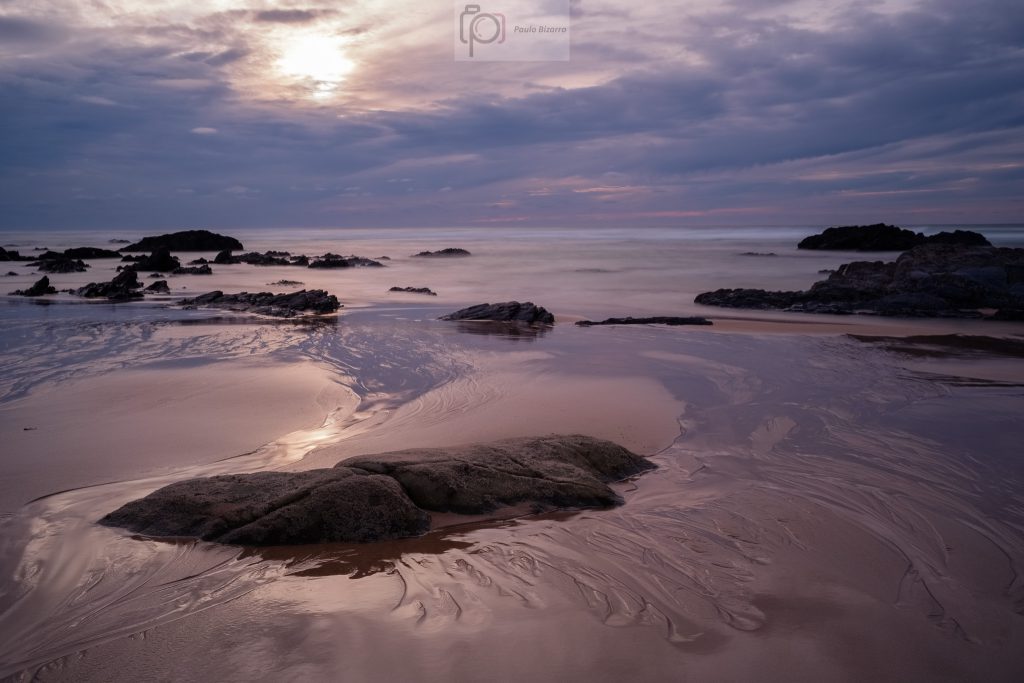
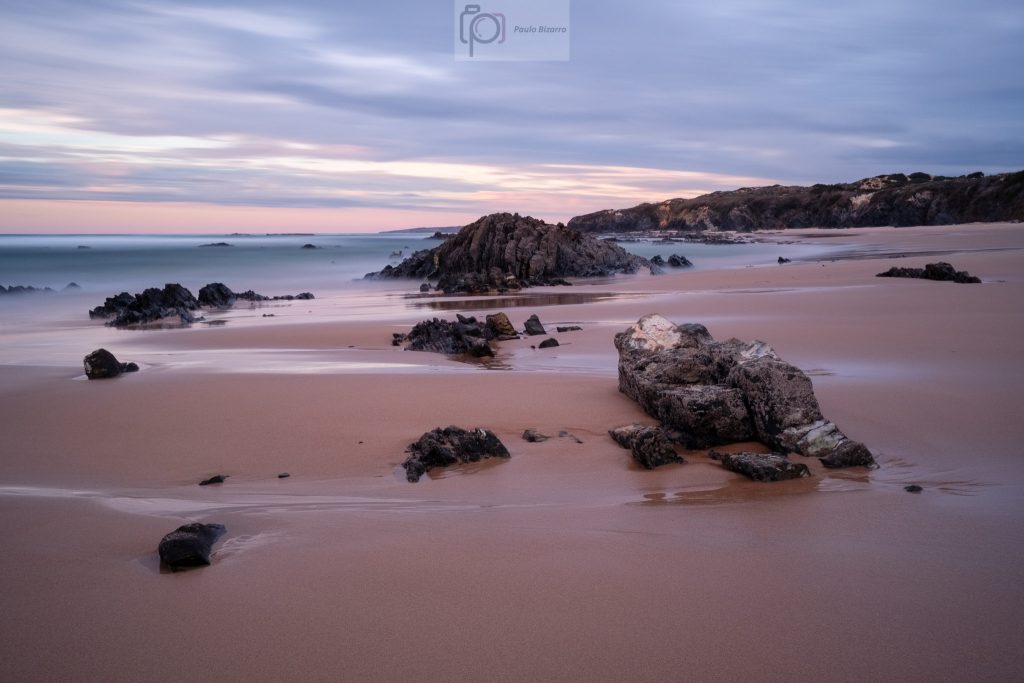
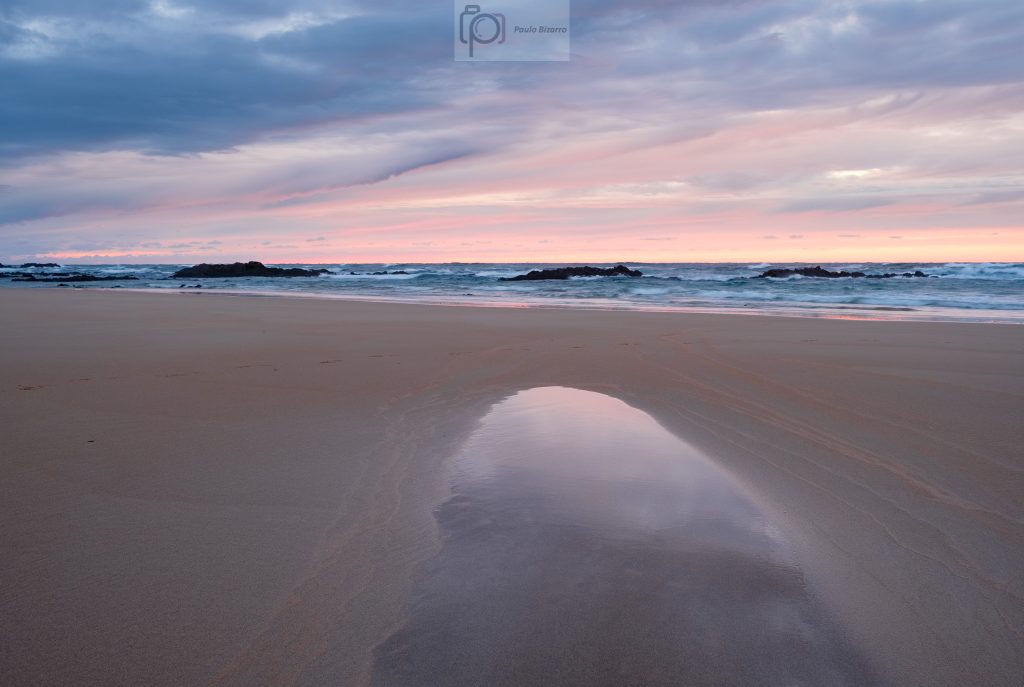
When sunset arrived, the colours were incredible, with red and orange streaks permeating the clouds. This light only lasts for a few minutes, so I was very busy just shooting. The beach has a very flat and nearly horizontal profile, which results in good reflections from the sunset colours on the thin film of water. I walked back home after dark and bracing against the cold, but it was well worth it.
